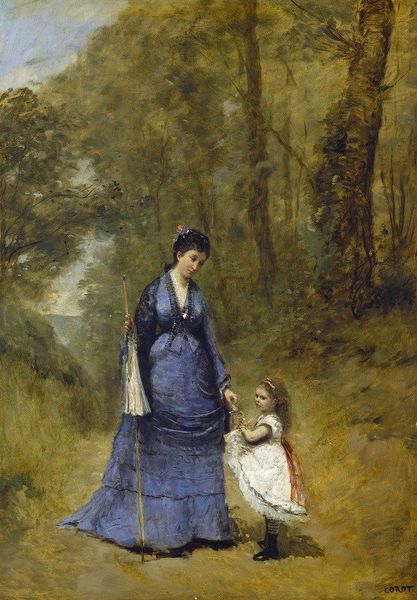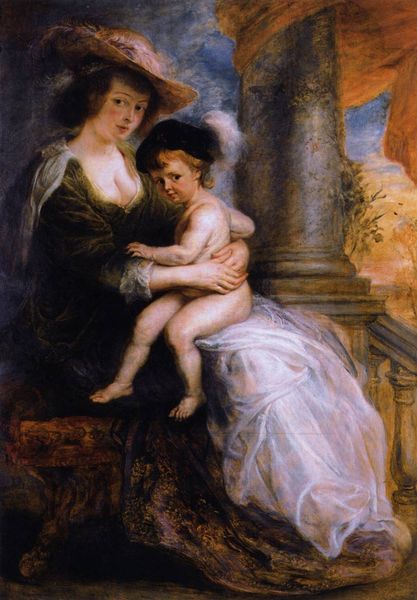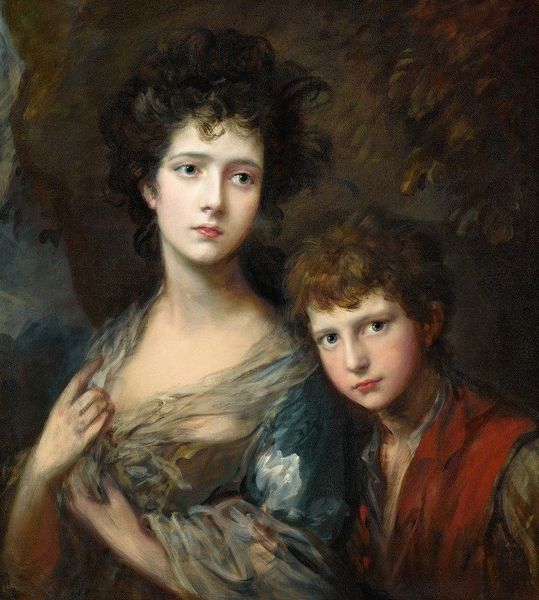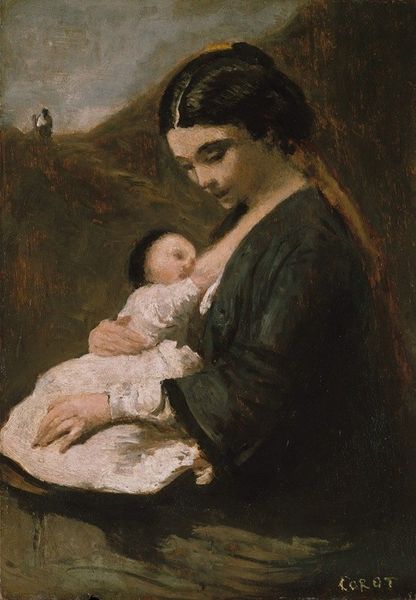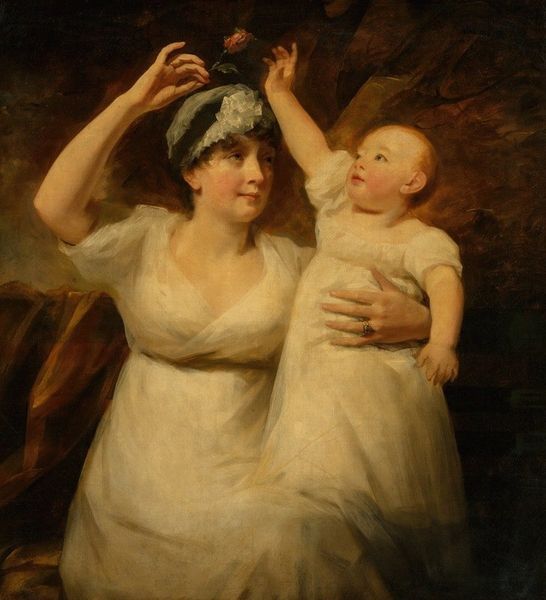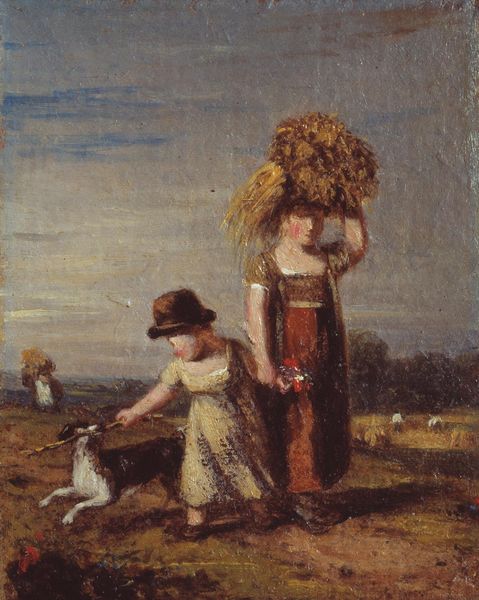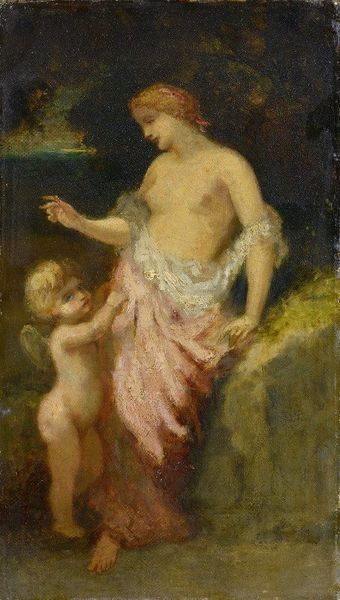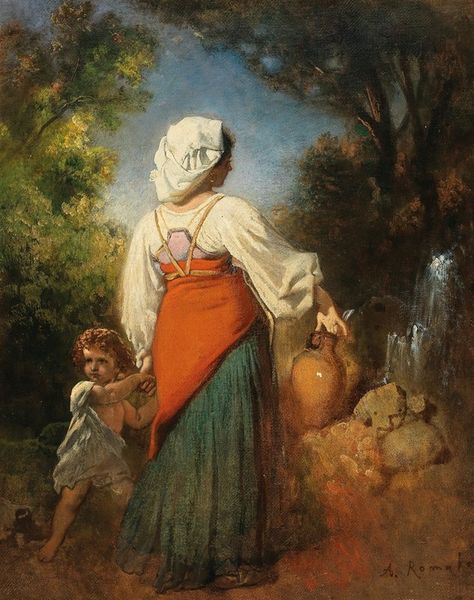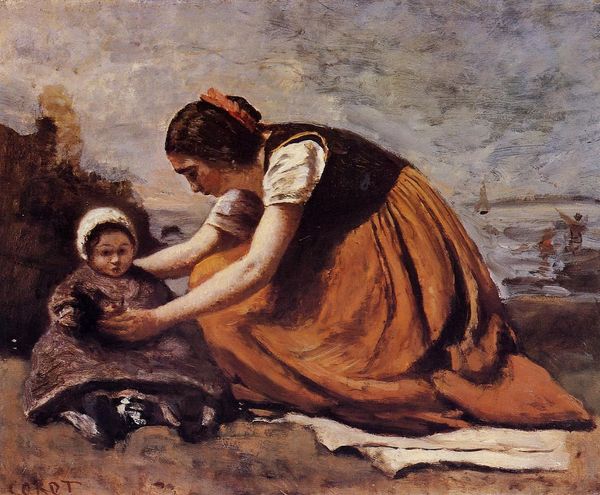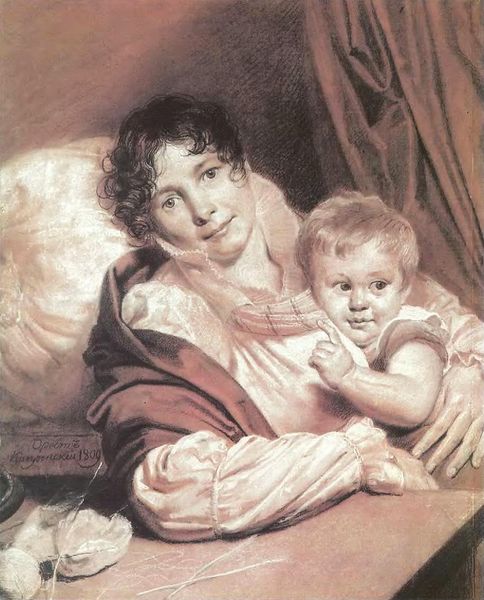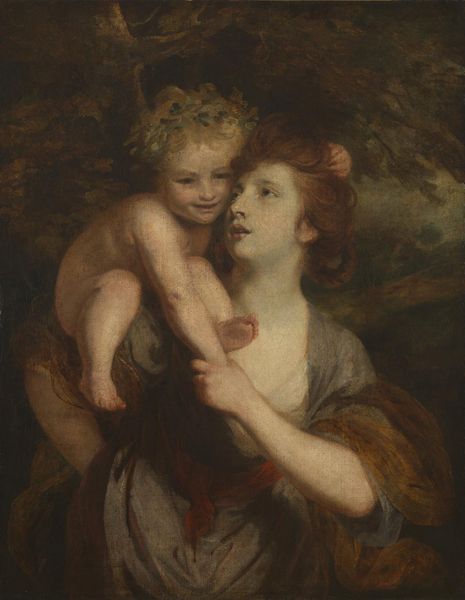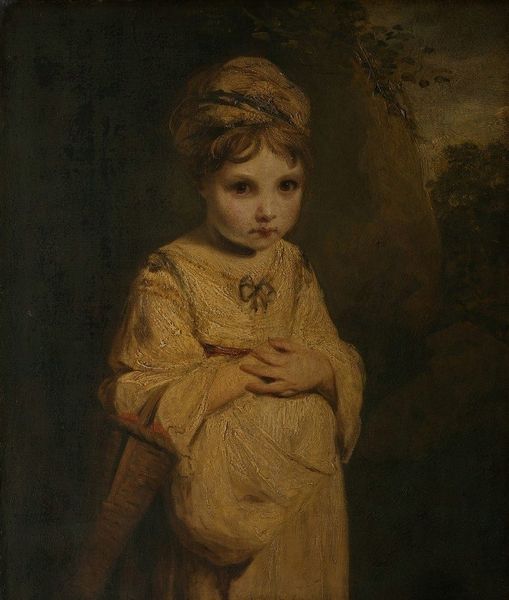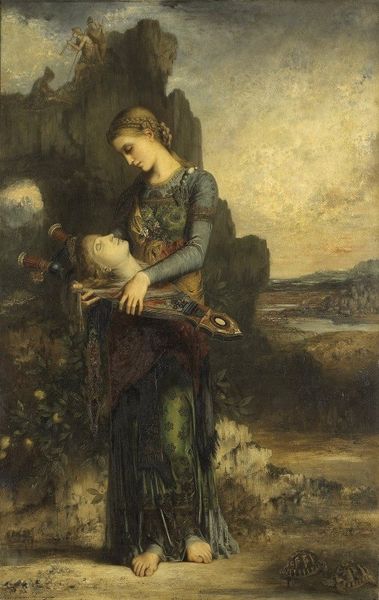
Dimensions: support: 117 x 92 mm
Copyright: CC-BY-NC-ND 4.0 DEED, Photo: Tate
Editor: We're looking at "The Broken Pitcher" by William Frederick Witherington, currently housed at the Tate. It feels so melancholic, doesn’t it? The shattered remains of the pitcher in the foreground juxtapose with the children, seemingly embodying innocence. What's your take on it? Curator: It speaks volumes about the social narratives of the 19th century. Witherington, active during a period of intense social reform, may be critiquing the vulnerability of childhood and domesticity. What is the role of public morality in portraying these children? Editor: So, it's not just about a broken pitcher, but a reflection of societal anxieties? Curator: Precisely. The broken pitcher becomes a symbol of shattered hopes, perhaps highlighting the fragility of life within the social structures of the time. It's a comment on how society views these figures. Editor: That gives me a lot to consider! I never thought about it in terms of public morality. Curator: Art often serves as a mirror, reflecting and questioning the values of its era.
